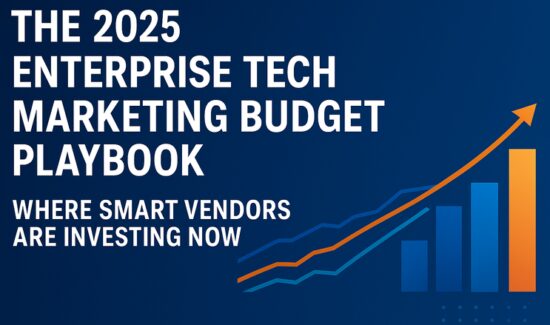Optimizing Growth Marketing with Self-Evolving AI Algorithms

As part of Solutions Review’s Contributed Content Series—a collection of contributed articles written by our enterprise tech thought leader community—Hari Valiyath, the co-founder and Chief Business Officer at Pixis, explains how companies can use self-evolving AI algorithms to optimize their growth marketing initiatives.
 Artificial intelligence (AI) has won its fair share of acclaim in the web of technological advancements. Its explosive growth owes much credence to its core—powerful sets of algorithms designed to learn, adapt, and improve with minimal human intervention. But AI is moving beyond algorithms that perform actions based on a set of rules to algorithms that can evolve to sharpen their ability to carry out tasks. This adaptive AI involves the automated generation of multiple algorithms, refining them based on the genetic principles of natural evolution: duplication, mutation, and selection.
Artificial intelligence (AI) has won its fair share of acclaim in the web of technological advancements. Its explosive growth owes much credence to its core—powerful sets of algorithms designed to learn, adapt, and improve with minimal human intervention. But AI is moving beyond algorithms that perform actions based on a set of rules to algorithms that can evolve to sharpen their ability to carry out tasks. This adaptive AI involves the automated generation of multiple algorithms, refining them based on the genetic principles of natural evolution: duplication, mutation, and selection.
In the context of self-evolving AI algorithms, mutation refers to the minor modifications that occur within the algorithm during the learning process. This ensures the algorithm doesn’t stick to one optimum but explores new possibilities and strategies. Selection is where AI evaluates and chooses from the set of mutations based on a confidence score. These AI algorithms are the brains behind impressive robotic feats, accurate predictive models, sophisticated natural language processing, and insightful data analytics, allowing professionals, such as marketers, to be more intuitive, adaptive, and dynamic.
Let’s delve deeper to glean the meeting point of self-evolving algorithms and marketing tools.
The Intersection of Marketing and AI
AI was in its infancy when marketers started to realize its potential. Today, AI is no longer a novelty realm. It’s assisting marketers’ modus operandi with a gamut of applications—predictive analysis, customer segmentation, ad targeting, sales forecasting, and content curation.
AI owes its prevalent use in marketing to data. Companies gather an overwhelmingly large amount of data about their customers. Processing and converting this information into slices of actionable insights has made AI tools game-changers for marketers. How, then, do self-evolving algorithms augment marketing tools?
Real-Time Big Data Analysis
Given the enormous size and dynamic nature of the data marketers deal with daily, algorithms must keep up with change. They need to understand new patterns, preferences, and decisions in real-time to take the best possible action. This is where AI tools powered by self-evolving algorithms outdo their predecessor versions.
Predictive Analysis
The foundation of marketing lies in predicting what the customer wants. As customer preferences change dynamically, AI tools must keep pace with these shifts. Here, AI tools powered by self-evolving algorithms can make more accurate and precise predictions. They understand new data patterns and learn, unlearn, and relearn to uphold their relevance.
Ad Targeting
Modern-day advertising necessitates a focused and individualized approach. To achieve this, marketers often deal with the challenge of studying individual customer histories and varying preferences. Self-evolving AI algorithms can tailor advertising strategies by learning from individual customers’ purchasing histories, browsing patterns, demographic details, and even social media interactions. As these algorithms learn and evolve, their ability to provide precise, individualized ad targeting increases, leading to enhanced customer engagement and, ultimately, higher returns on advertising investments.
Content Strategy
Self-evolving algorithms excel here as they learn efficiently from an ever-changing pool of data, such as trending topics, customer feedback or preferences, evolving language syntax, and slang. Coupled with natural language generation, these AI tools can create engaging, relevant content that resonates with various audience cohorts more effectively. These algorithms can adapt their content strategy over time, pivoting the tone, style, and subject matter based on the observed performance of previous content. The combination of a tailored advertising strategy and dynamic content creation marks a transformative approach to marketing, opening up avenues for increased customer satisfaction and business growth.
Cross-Channel Marketing
In today’s dynamic digital landscape, strategic cross-channel budget allocation and optimization are the linchpin of marketing success. Consumers engage with brands across multiple platforms before making their final purchase. Therefore, it is important to understand and optimize marketing based on this behavior.
A customer-centric approach, tailored to the audience’s preferences, is vital as it ensures high returns at optimized costs. Think of it as spending where high returns are guaranteed versus spending where high returns are anticipated. Adaptability and agility are non-negotiable traits, and self-evolving AI-powered algorithms ensure brands spend where customers buy.
The continuously evolving landscape of AI, spearheaded by self-evolving algorithms, is already leading the paradigm shift in how businesses, particularly marketers, operate. AI-led marketing tools will simplify data interpretation and strategy formulation and predict and keep pace with the ever-dynamic customer preferences. This progression in AI can pave the way for a seamless business-customer relationship in the near future.





















